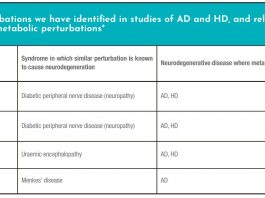Novel research has indicated that the intricate relationship of proteins is critical to efficient brain function, such as information processing.
The research, conducted by scientists at the Martin Luther University Halle-Wittenberg (MLU), has identified a complex network of various proteins required to disseminate information between nerve cells, with the team closely analysing this function in the synaptic vesicles, which are essential to this brain function. Their findings are published in Nature Communications.
Our perception of the world around us is critically controlled by several billion nerve cells that work harmoniously together, transmitting information through an array of chemical and electrical processes at the speed of a few milliseconds, allowing us to interact with our surrounding environment.
Dr Carla Schmidt, an assistant professor at the Centre for Innovation Competence at MLU, said: “Special messenger substances – known as neurotransmitters – are released at the synapses of the nerve cells. They transmit information between the individual nerve cells.”
These special messenger substances are stored inside synaptic vessels, which attach to the membrane of the cell when reacting to an electrical impulse, subsequently releasing the messenger substance. Next, the messenger substances are identified by special receptor proteins in the next nerve cell. However, to be successful, the collection of proteins needs to work in unison, achieving machine-like efficiency, with this process currently having insufficient understanding.
To examine this process, the team utilised a special form of mass spectrometry called Cross-linking mass spectrometry – which helps to distinguish the interaction sites of the proteins. The proteins are then combined with a substance that connects proteins in the proximity of each other, with the substance occurring at different locations depending on the behaviour between the proteins.
These complicated protein patterns were then analysed by the mass spectrometer, which enabled the scientists to infer the arrangement of the proteins, examining different stages in which the vesicles detect which protein networks have formed.
This investigation into the signal transmission of nerve cells provides a more comprehensive understanding of brain function and will potentially help scientists identify malfunctions that trigger neurodegenerative diseases, such as Alzheimer’s.









